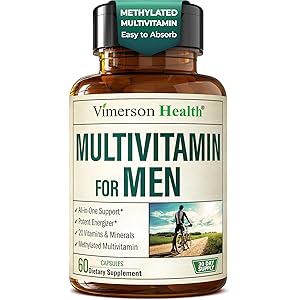Biotin | Collagen | Hyaluronic Acid | Keratin - Clinically Tested Supplement - Hair Growth Support, Skin & Nails - 25000 mcg Vitamins B2, B3, B6 & B7 + B1 - Made in USA - Women & Men | 60 Capsules
$27.99 (as of October 25, 2025 06:13 GMT +00:00 - More infoProduct prices and availability are accurate as of the date/time indicated and are subject to change. Any price and availability information displayed on [relevant Amazon Site(s), as applicable] at the time of purchase will apply to the purchase of this product.)What is a High-Fiber Diet?
A high-fiber diet is one that emphasizes the consumption of foods rich in dietary fiber, which is a type of carbohydrate that the body cannot digest. Unlike other carbohydrates that are broken down into sugar molecules, fiber passes through the body undigested, providing a range of health benefits. This diet typically includes a variety of fruits, vegetables, whole grains, legumes, and nuts, all of which contribute to an increased fiber intake.
Benefits of a High-Fiber Diet
One of the primary benefits of a high-fiber diet is its ability to promote digestive health. Fiber adds bulk to the stool, which helps to prevent constipation and maintain regular bowel movements. Additionally, a high-fiber diet can aid in weight management, as fiber-rich foods tend to be more filling, reducing overall calorie intake. Furthermore, studies have shown that a diet high in fiber can lower the risk of developing chronic diseases such as heart disease, diabetes, and certain types of cancer.
Types of Dietary Fiber
Dietary fiber is categorized into two main types: soluble and insoluble fiber. Soluble fiber dissolves in water and can help lower blood cholesterol and glucose levels. Foods high in soluble fiber include oats, beans, lentils, apples, and citrus fruits. On the other hand, insoluble fiber does not dissolve in water and is essential for adding bulk to the stool, promoting regularity. Whole grains, nuts, and vegetables like carrots and celery are excellent sources of insoluble fiber.
Recommended Daily Fiber Intake
The recommended daily intake of fiber varies by age and gender. Generally, adult women should aim for about 25 grams of fiber per day, while adult men should target around 38 grams. However, most people only consume about half of the recommended amount. Increasing fiber intake gradually is crucial to avoid digestive discomfort, and it’s important to drink plenty of water to help fiber do its job effectively.
How to Incorporate More Fiber into Your Diet
Incorporating more fiber into your diet can be simple and enjoyable. Start by choosing whole grain products over refined grains, such as opting for whole grain bread, brown rice, and whole wheat pasta. Additionally, include a variety of fruits and vegetables in your meals and snacks. Beans and legumes are also excellent sources of fiber and can be added to soups, salads, and stews. Snacking on nuts and seeds can further boost your fiber intake while providing healthy fats.
High-Fiber Foods to Consider
Some of the best high-fiber foods include chia seeds, flaxseeds, lentils, black beans, split peas, artichokes, and raspberries. For breakfast, consider oatmeal topped with fruits or a smoothie made with spinach and berries. For lunch or dinner, salads loaded with vegetables and quinoa or brown rice can be both satisfying and nutritious. Even snacks can be fiber-rich, such as popcorn or whole grain crackers with hummus.
Potential Side Effects of a High-Fiber Diet
While a high-fiber diet has numerous benefits, it can also lead to some side effects if not introduced properly. Common issues include bloating, gas, and cramping, especially if fiber intake is increased too quickly. To mitigate these symptoms, it’s advisable to increase fiber intake gradually and ensure adequate hydration. Listening to your body and adjusting your fiber sources can also help in managing any discomfort.
High-Fiber Diet and Weight Loss
A high-fiber diet can be an effective strategy for weight loss. Fiber-rich foods are typically lower in calories and higher in volume, which can help you feel fuller for longer periods. This satiety can reduce the likelihood of overeating and snacking on unhealthy foods. Additionally, the slow digestion of fiber helps maintain stable blood sugar levels, which can prevent cravings and energy crashes.
High-Fiber Diet for Heart Health
Research indicates that a high-fiber diet can significantly benefit heart health. Soluble fiber, in particular, has been shown to lower LDL cholesterol levels, which is a risk factor for heart disease. Foods such as oats, beans, and fruits play a crucial role in this aspect. Moreover, a fiber-rich diet can help regulate blood pressure and inflammation, further contributing to cardiovascular health.
Conclusion: Embracing a High-Fiber Lifestyle
Embracing a high-fiber lifestyle can lead to numerous health benefits, from improved digestion to enhanced heart health. By making conscious choices to include more fiber-rich foods in your diet, you can enjoy a variety of flavors and textures while supporting your overall well-being. Whether you’re looking to lose weight, manage a health condition, or simply improve your diet, a high-fiber approach is a smart and sustainable choice.


